Lunigiana, as is well known, is a land dotted with Dante’s traces, albeit fragmentary and with few certain data. We do know for sure that Dante, on the morning of October 6, 1306, was in Sarzana, in Piazza della Calcandola, today’s Piazza del Comune, where he was appointed procurator of Marquis Franceschino Malaspina of Mulazzo as part of what has gone down in history as the Peace of Castelnuovo, or the act, signed that same day at the castle of Castelnuovo Magra, that ended the long, wearisome and ruinous war between the Marquis Malaspina and the bishops of Luni. The acts of the peace of Castelnuovo, found in the mid-eighteenth century and the subject of Giovanni Sforza’s extensive studies at the dawn of the twentieth century, are now preserved in the State Archives of La Spezia. Besides, Dante’s entire oeuvre is replete with references to the lands of Lunigiana. It is, however, a link that does not end with historical and literary sources, because the Lia Museum in La Spezia preserves, among its gold collections, several plates made at the time of Dante Alighieri. These are the threads that make up the plot of Dante and Giotto. Dialogue and suggestion, the exhibition with which the Lia Museum rekindles the lights on the presence of Dante in Lunigiana during the eighteenth century, and to date the only exhibition event organized between La Spezia and the major centers of the area (from Sarzana to Carrara, from Massa to Pontremoli) to remind us that Dante was here, that it was not an occasional passage, and that various studies on Dante in the last century have sprouted in Lunigiana.
There is, however, first and foremost, the path among the works of art: the exhibition reconstructs, with a few objects and all significant, the artistic temperament of Tuscany in the late thirteenth and early fourteenth centuries, and it can do so because it can count on a permanent collection rich in gold fonds of great value, which constitute the best-known nucleus of the collection of engineer Amedeo Lia, who was moved by a burning passion for medieval panels throughout his life. From this considerable collecting nucleus, among the principal and most valuable in Italy for medieval painting, a small selection has been drawn by curators Andrea Marmori and Francesca Giorgi that allows the visitor to learn what was happening in the Tuscany of the arts before, during and after Dante. The narrowness of this corpus makes no claim to completeness: the intent, well emphasized by Andrea Marmori, is, if anything, to provide “a cross-section of the artistic production of that glimmering turn of years.”
It may well be said, however, that what had to be there is there. Including the same Giotto and Cimabue, who came on loan with two arcane pieces, the Saint Stephen from the Horne Museum and the Madonna and Child from the Museum of Santa Verdiana in Castelfiorentino. And included are some exceptional illuminated manuscripts, evoking the confidence the Supreme Poet surely had with “quell’arte ch’alluminar chiamata è in Parisi” and with high quality book production. The layout does not follow a precise chronological order: however, the visitor will be able, with a little imagination, to picture the rhapsodic progression of the collector’s room (also literally: the gold fonds, before Lia donated the entire collection to the city, were in his bedroom).

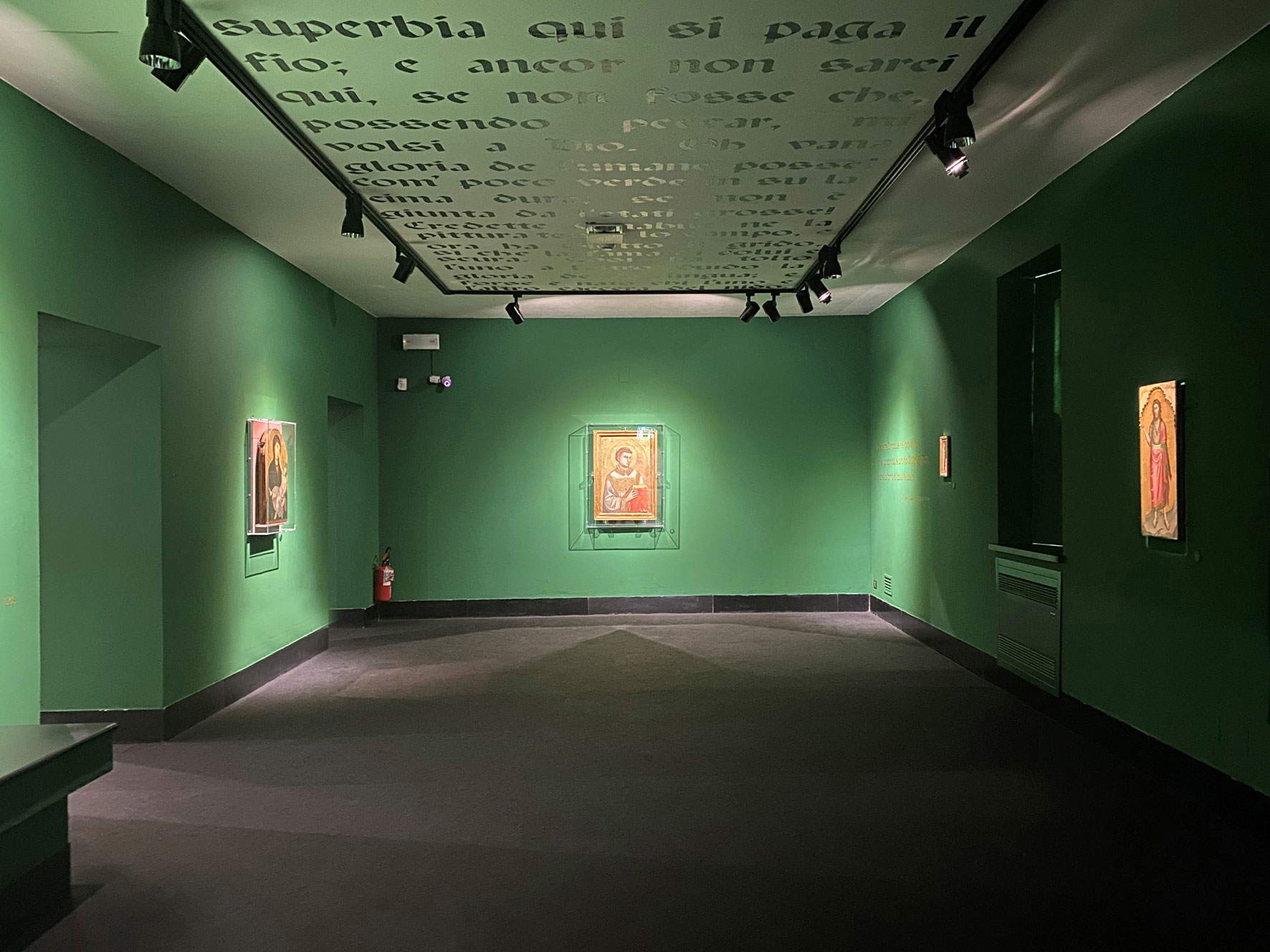
There is, however, a typological criterion in the ordering of the exhibition: and to welcome the visitor are some exciting objects of suntuary art, beginning with the reliquary-box by an artist who signs on the front as “frater Iacobus de Ferentino” (to date this turns out to be the only known work of this friar-decorator) and who, in the same inscription, indicates the function of the small wooden artifact, a container that was meant to hold the relics of one of the eleven thousand virgins who were martyred by the Huns in Cologne along with Saint Ursula. Because of the style of the decorations, one imagines that the box is in some way linked to the Rimini school, where already a few years after Giotto’s death a flourishing group of artists was born who developed his language and who are the protagonists of an exhibition in the capital of Romagna in recent months. And documenting the reception of Giotto’s language in northern Italy is a splendid portable altarpiece by Giusto de’ Menabuoi, a trittichetto with the Madonna of Humility in the center, Saints John the Baptist and Christopher in the side compartments, and a tiny Annunciation in the upper register: it is the work of the period when the great Florentine painter was frescoing the Baptistery of Padua, and the tangencies that Lia’s altarolo has with the figures that populate the scenes painted in the Veneto in the 1470s will prove it. On the other hand, another altarolo is from Dante’s time, one executed by a Friar Pietro Teutonico who was Giotto’s companion in the Assisi worksite: it is a work that consists of five gilded and graffito glass plates, probably brought together in the eighteenth century.
The second room of the exhibition, the largest, is all devoted to works on panel: the two works by Giotto and Cimabue stand out, as anticipated. Luxurious presences, if one considers the number of known Giotto and Cimabue paintings (even adding those attributed to the sure ones), and even more if one takes into account the fact that they do not travel often: the Santo Stefano and the Madonna of Castelfiorentino, however, are among those that have moved the most in this Dante year, the former for the huge exhibition at the San Domenico Museums in Forlì, the latter for the Ravenna focus on the arts in Dante’s time. And still few museums can say they were able to exhibit works by Cimabue and Giotto together this year: it happened only in the two exhibitions just mentioned. To see Giotto and Cimabue side by side is an event that is almost exceptional, and all the more so if it is a long-discussed work such as the Madonna of Castelfiorentino, which has been the subject of a long and lively critical debate that has seen it assigned to Cimabue, Giotto or both. The most recent hypothesis, recalls Rosanna Caterina Proto Pisani in the booklet that is distributed free of charge in the exhibition (there is no catalog: too bad), wants that “the young Giotto, at the time still a pupil in Cimabue’s workshop,” also participated in the realization of the painting, and this by virtue of the characters of the layout and the figures: “the composition is traditional, with a gold background, the Madonna half-length and the Child in her arms, animated by a dynamism and gestural expressiveness that prelude the great turning point in the naturalistic sense of Italian painting.” We find ourselves at the moment when, between the end of the 13th and the beginnings of the 14th century, “the more rigid formulas of Byzantine ancestry are abandoned in favor of a more naturalistic and humanized rendering of the sacred figures,” and the panel is presented to the relative with some elements that pertain to tradition and with others that would instead already open to Giotto’s innovations. For example, there has been much discussion about the drapery of the Child, which for some critics would be similar to that of the early Giotto, and for others would be in the Arnolfo style: definitive opinions are lacking.
Then, on the next wall, here is Giotto’s Saint Stephen, another work long debated in the past, and now unanimously recognized by critics as an autograph panel (not only that: as one of the “absolute pinnacles of Giotto’s art,” to use the words of Angelo Tartuferi), a fragment of a dismembered polyptych. It is a work from the late stages of Giotto’s career: critics have leaned toward dating it to the last period of the painter’s activity, a time during which, Elisabetta Nardinocchi explains, his painting is distinguished by “an even firmer monumentality and plasticity, absolutely perceptible in the stupendous foreshortening of the saint’s left hand.”
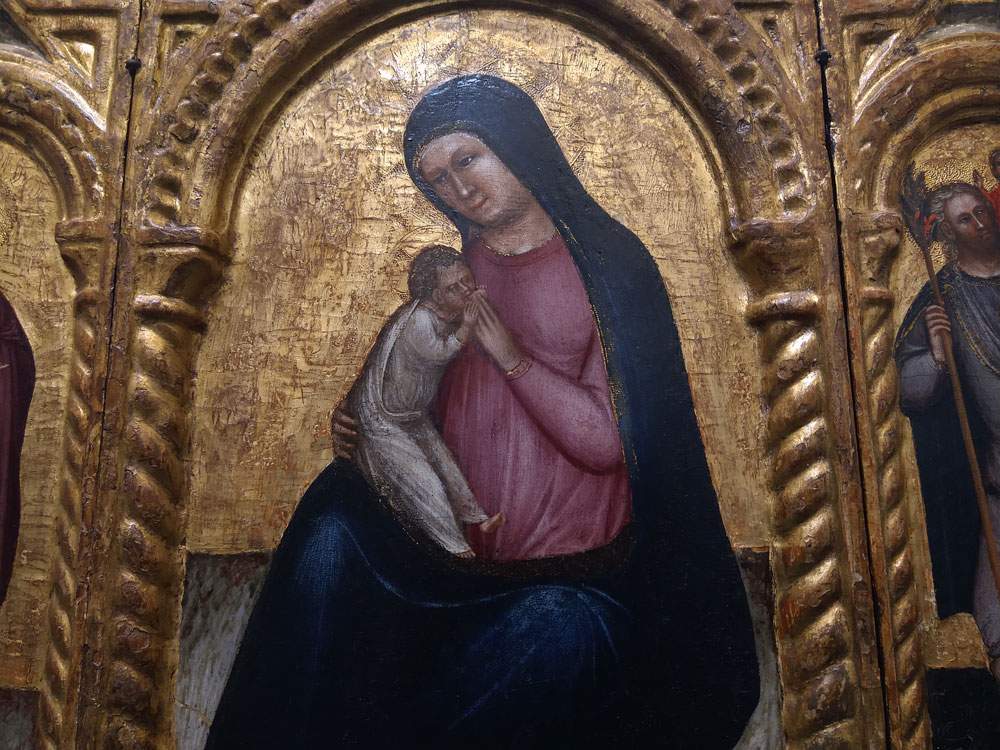
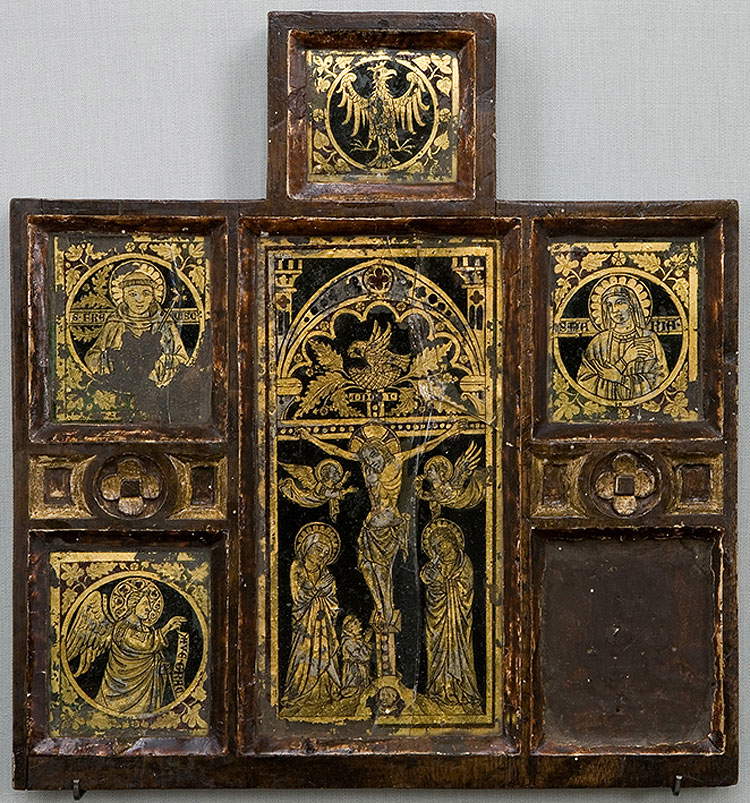
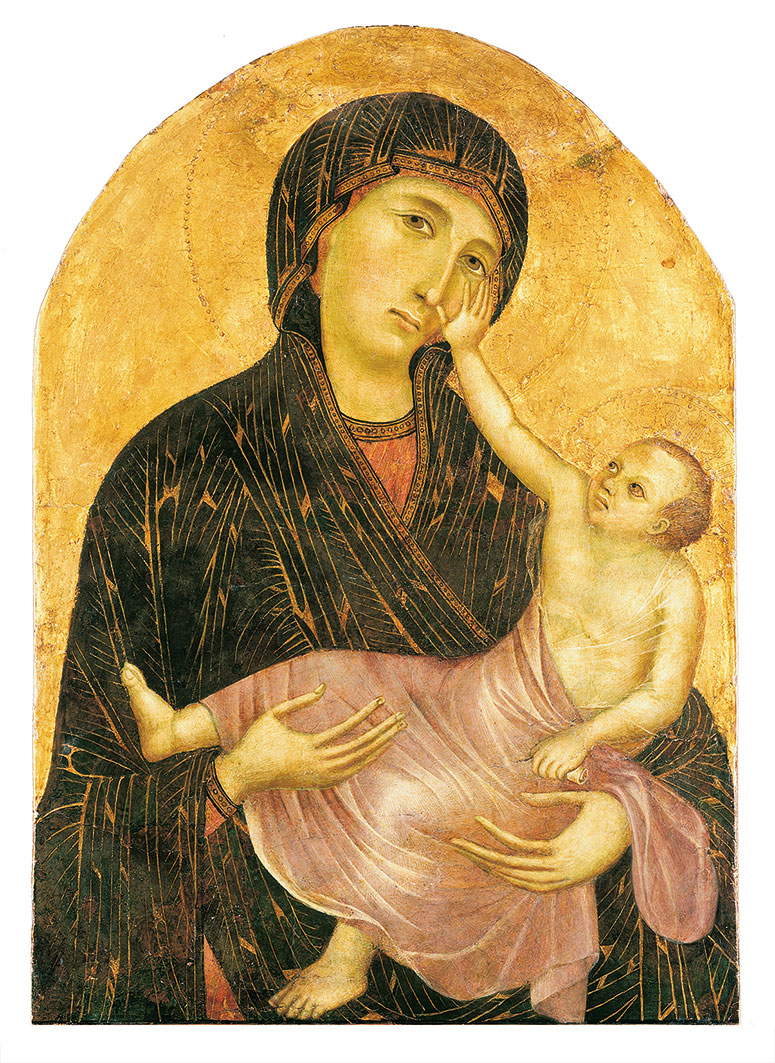
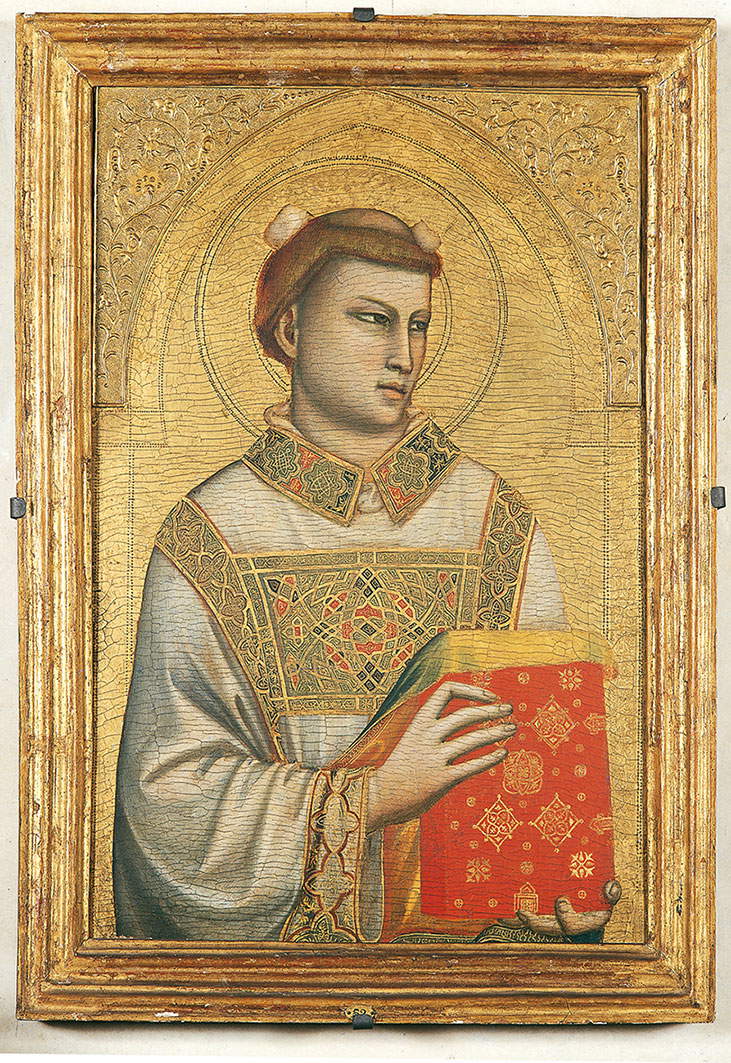
In the rest of the room stand out some of the best Giottoesque works in the Lia collection. Even before encountering Giotto and Cimabue, one comes across a delicate Lamentation over the Dead Christ by the extremely rare Lippo di Benivieni (who is also the protagonist of a dedicated exhibition, the one currently underway at the Museo d’Arte Sacra in Montespertoli), a painter trained in the groove of tradition but far from immune to Giottesque novelties, as shown by the panel dated by critics to the late thirteenth or early fourteenth century, and where the strength of feeling that transpires from the characters’ expressions coexists with thirteenth-century elegances: Lia won it at auction at Sotheby’s, competing with an American museum (and later receiving compliments from Federico Zeri, his habitual adviser and friend, for purchasing what was one of the most significant Giottesque panels on the market in the 1990s). On the opposite wall, we move forward a few decades with St. John the Baptist by Bernardo Daddi, one of Giotto’s best pupils, who here produces a Baptist, also from a polyptych, of intense and vivid humanity. The earliest chronological extreme of the exhibition is given by the Blessing Christ by an unknown Florentine painter, dated to the 1380s, a hieratic panel still dependent on Byzantine stylistic features.
The last room is devoted to books, ancient and modern. The sheets that come from the ancient volumes refer to the two artists who had a sort of monopoly on the illustration of the Comedy at the time when, towards the second quarter of the 14th century, interest in Dante’s poem was beginning to spread even in Florence: Pacino di Buonaguida and the Master of the Dominican Effigies. More refined the former, more attentive to the real and sharper the latter, who was, moreover, also a less prolific and frenetic artist than his colleague, who instead led a very active workshop: Pacino is present in the exhibition with an initial taken from a dismembered gradual, and in which a Descent of the Holy Spirit is illustrated with manners that, the curators point out, look to Giotto of the Peruzzi Chapel in Santa Croce. The same could be said, however, for the Birth of the Baptist by the Master of the Dominican Effigies: its image, too, follows the distended approach of the last Giotto, with a narrative verve that leads him to condense two episodes into a single scene. The conclusion is entrusted to the modern volumes: Four volumes arriving from La Spezia’s “Ubaldo Mazzini” Civic Library alternate under the Lia’s display cases, beginning with Alessandro Vellutello’s Commedia con la nova espositione published in Venice in 1544, the first illustrated edition of Dante’s poem published in modern times, flanked by Bernardino Daniello da Lucca’s commentary on the Commedia, a work from 1568 that constitutes the last complete commentary on Dante’s work in the sixteenth century, published shortly before interest in the Supreme Poet began to wane. Two testimonies of the flowering of Dante studies in the early twentieth century close: the manuscript of Giovanni Sforza’s Dante and the Lunigiana, and a copy of Il Giornale Dantesco, a periodical edited by Giuseppe Lando Passerini and published between 1893 and 1915.
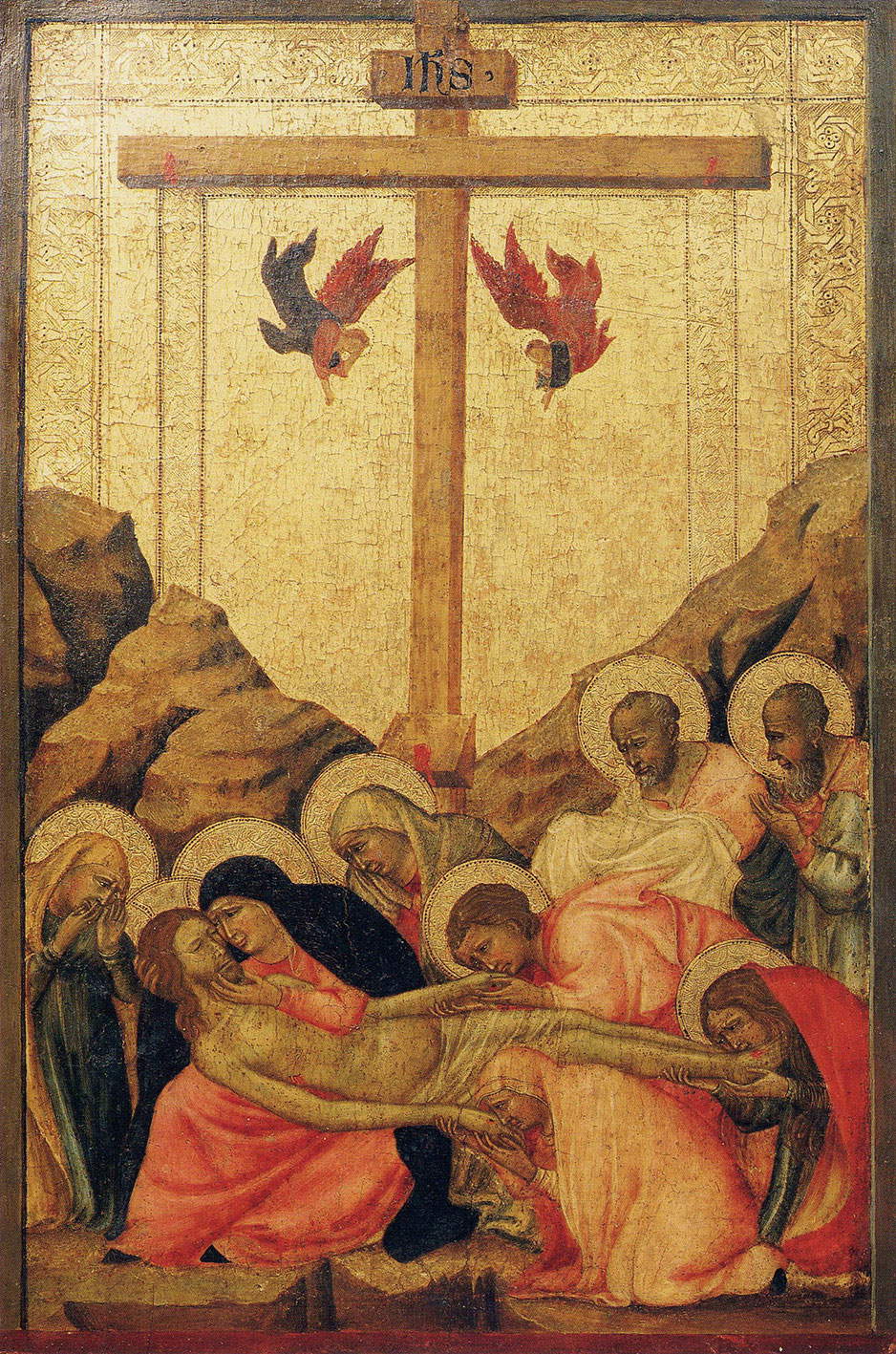
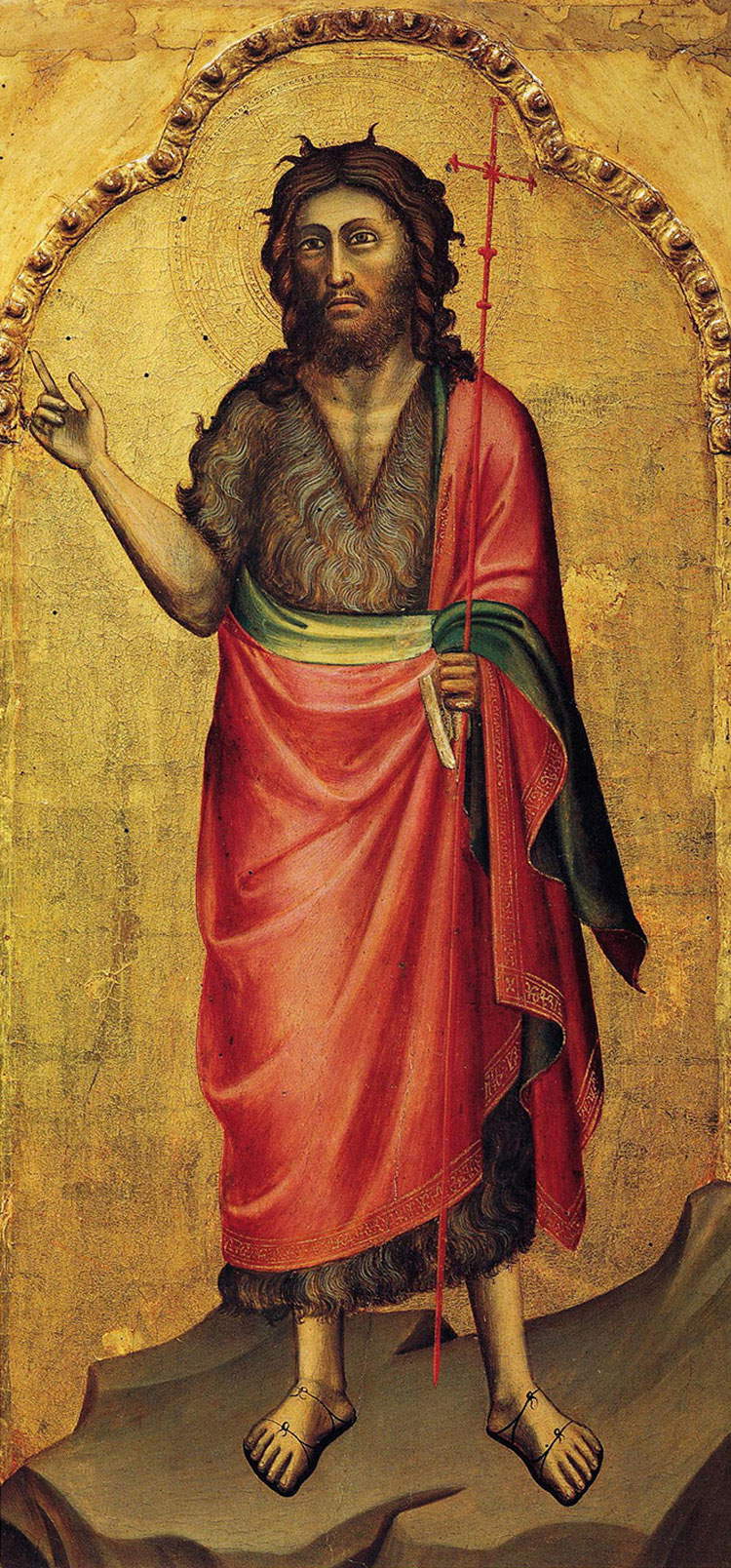
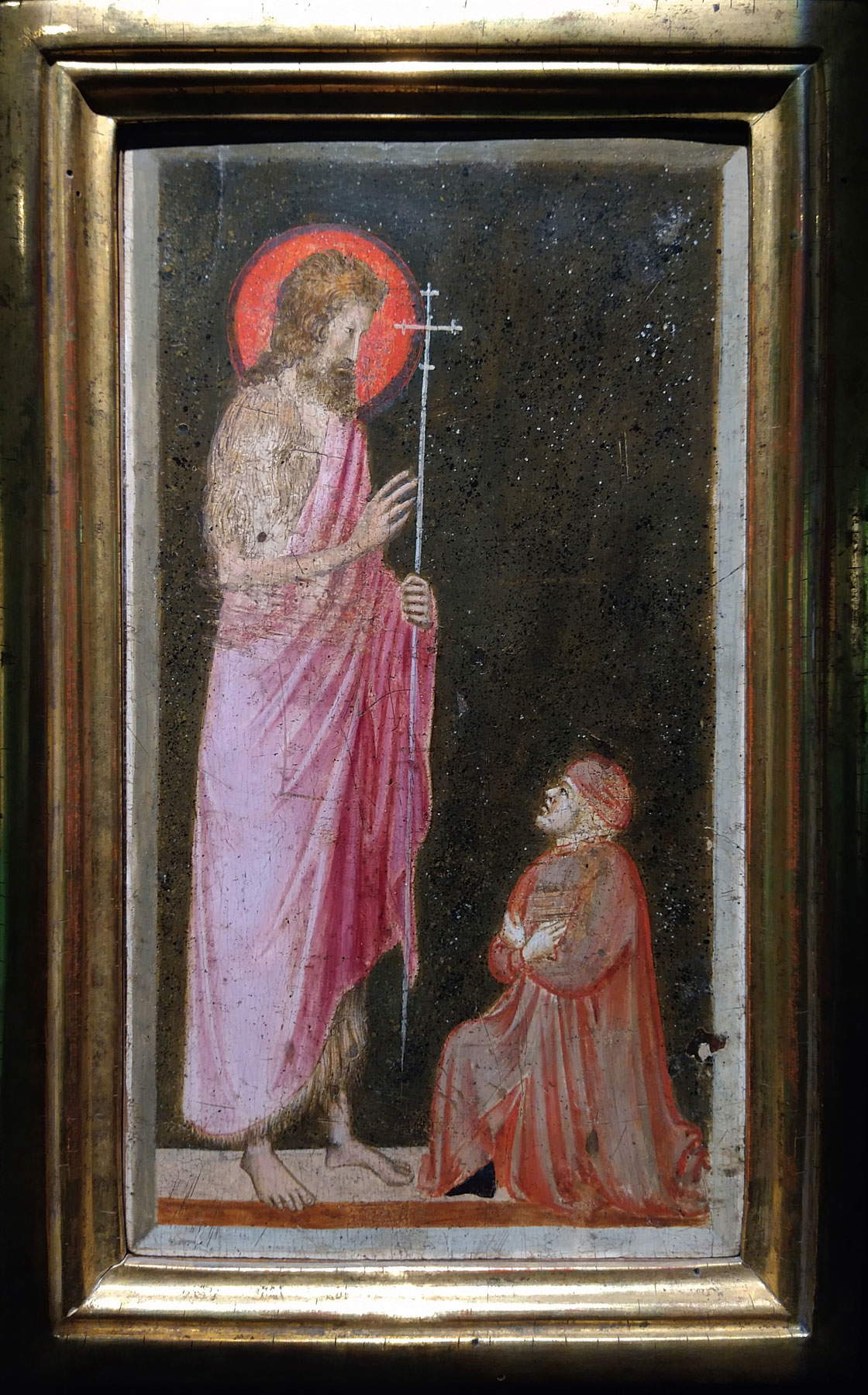

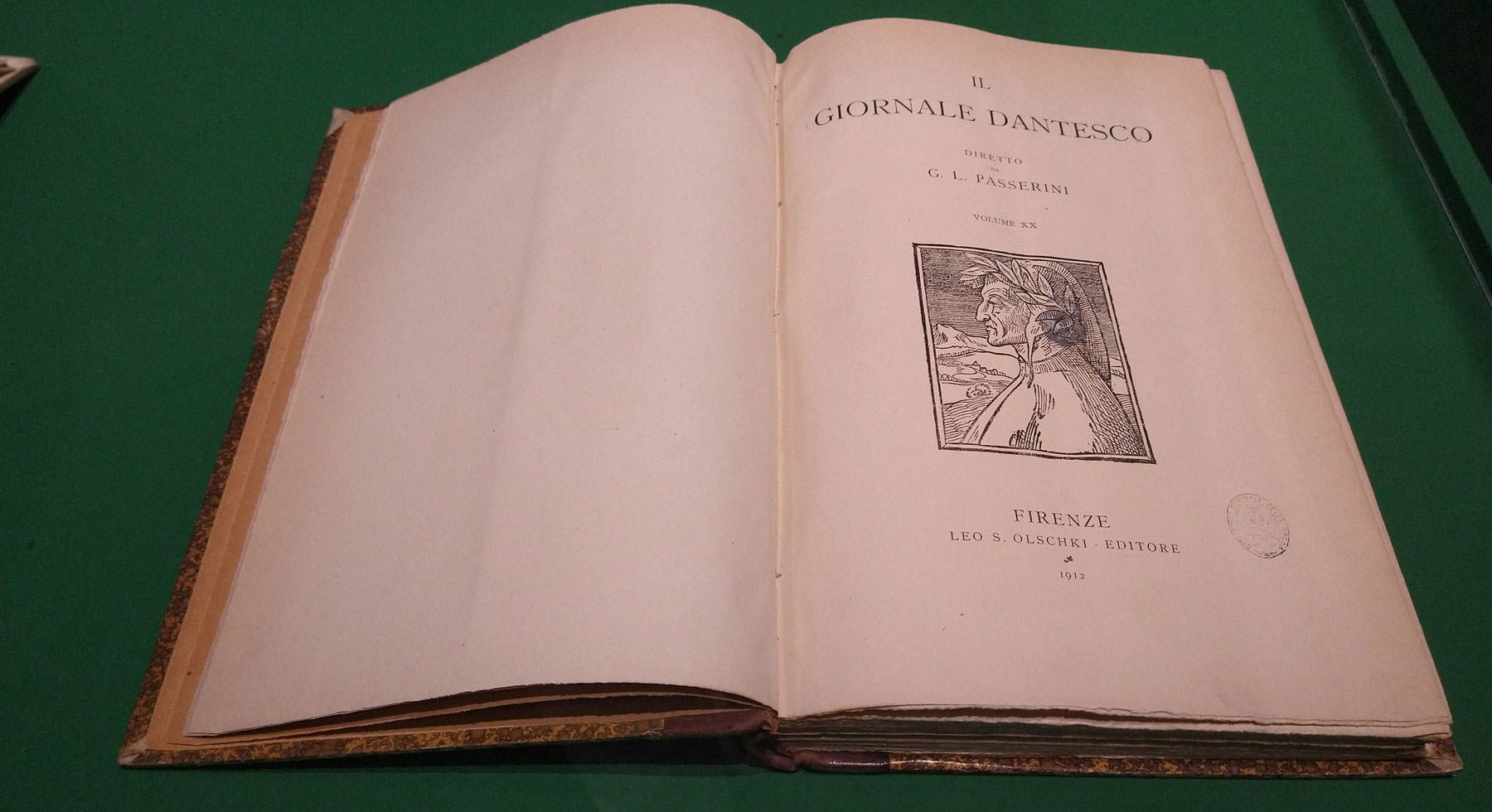
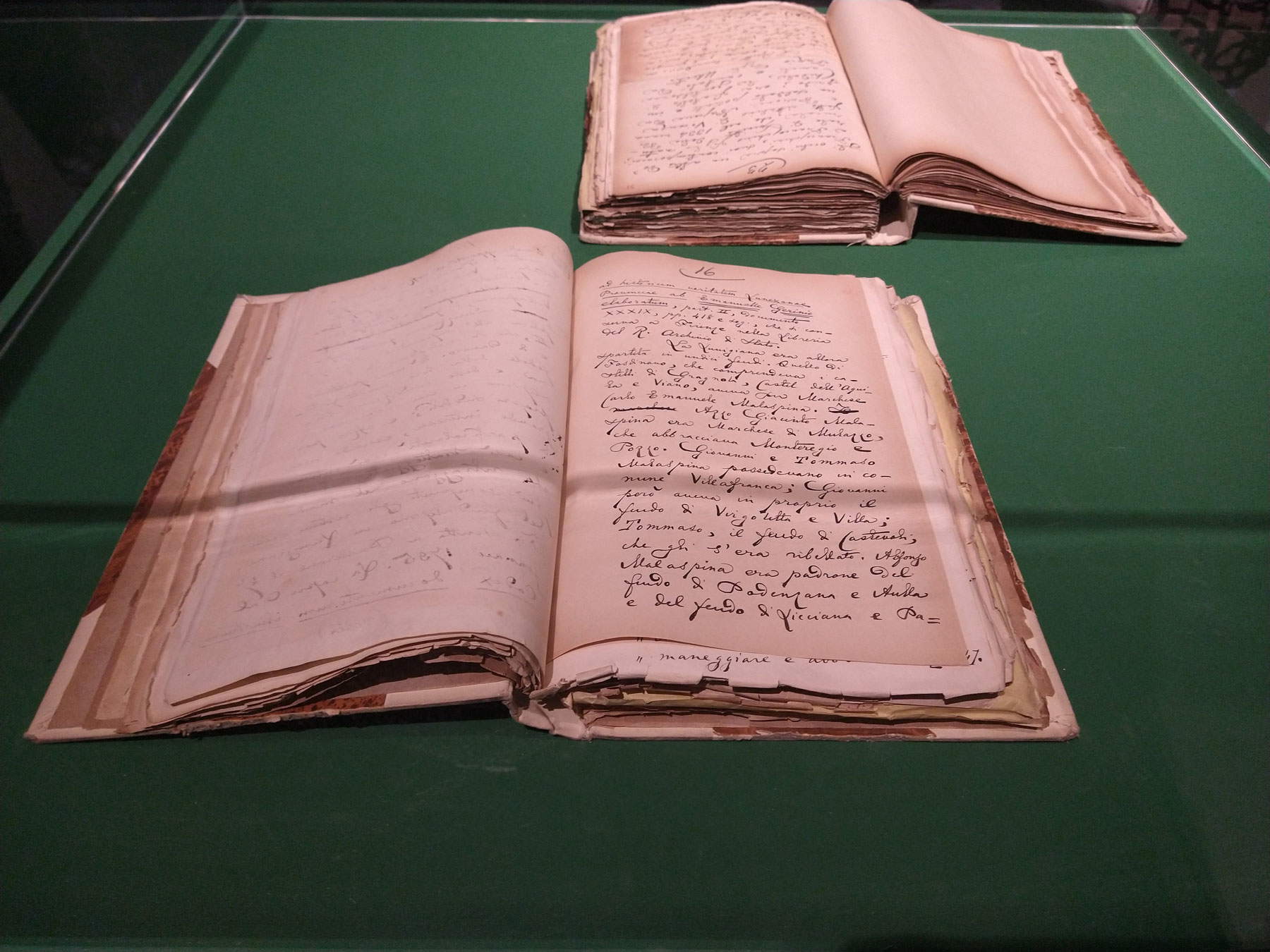
With the Giornale D antesco we move away from the shores of the Gulf of the Poets: the periodical was published in Venice, and was founded by Passerini himself, who was a great enthusiast of Dante’s work and devoted much of his activity to spreading knowledge of the poet. We come back to it, however, with Giovanni Sforza, a historian from Montignosio, the first director of the State Archives in Massa, who had begun to deal with Dante as early as 1868, with his volume Dante and the Pisans, and who in 1906, the year of the secentenary of the Peace of Castelnuovo, was the scientific coordinator of research initiatives around the theme of Dante in Lunigiana. The manuscript, bound in two volumes, is the result of painstaking work that led Sforza to examine all the territories mentioned in Dante’s works, to try to reconstruct the role that Dante played in the peace of Castelnuovo, to collect all possible documents and to transcribe them (some have even been lost and are known only thanks to Sforza’s notes and recordings, “as punctual as they are irreplaceable,” Marmori points out). One owes to Sforza much of the knowledge we have today about Dante’s stay under the Apuan Alps.
We owe instead to the Lia Museum the merit of having reminded him, in the absence of exhibition events dedicated to this topic during the eighteenth-centennial year, with a delightful and enjoyable exhibition, of the type on which an increasing number of museums are moving: small thematic lunges on the permanent collections, with few loans and targeted, keeping quality and rigor high. The Lia is no stranger to events of this kind. And, as it has done in the past, it has done very well.
Warning: the translation into English of the original Italian article was created using automatic tools. We undertake to review all articles, but we do not guarantee the total absence of inaccuracies in the translation due to the program. You can find the original by clicking on the ITA button. If you find any mistake,please contact us.